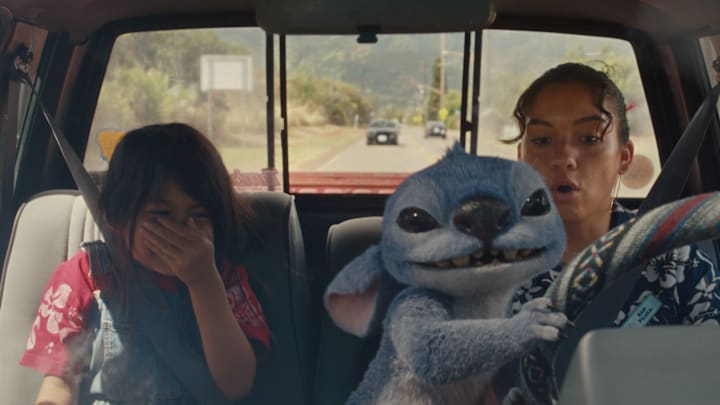Audiences who watched both Lilo and Stitch movies, the animated one and the recent live-action adaptation, are aware that the story underwent significant changes during its move from animated to real-world format. Various changes, such as Gantu and Pleakley's colorful ensembles, transformed the family-friendly film into what feels like a corporate-sponsored adventure. Then, there's the ending.

In the live-action version of Lilo and Stitch, Nani ultimately has to give up custody of Lilo. Although Nani attempts to meet the social worker's requests to better their home life, she falls short. An accident, in fact, that sets foster care proceedings in motion.
When Nani finally secures a position that she enjoys, Lilo tries to participate; it's at the local beach, giving surfing lessons. Things seem to be going well until Lilo gets in the water and nearly drowns. The resulting hospital visit—without health insurance—puts Nani in a bind. This is when DPSS shows up to offer Nani a deal: the state agrees to cover Lilo's medical expenses in exchange for Nani relinquishing custody. She doesn't at that juncture, but in the conclusion, the elder Pelakai gives in.
The movie's wrap-up depicts Nani's neighbor and a state worker discussing foster care options for Lilo. They reveal that "special circumstances" allow for the young girl to stay with her close family friend, Nani's neighbor Tutu (Amy Hill), instead of being placed in the system while awaiting adoption. Tutu and Mrs. Kekoa (Tia Carrere) frame the arrangement as being beneficial, supposedly unaffecting the Pelekai's everyday lives. However, the ending complicates matters further.

Having only mentioned Nani's desire to become a marine biologist once, Tutu shocks everyone with her last monologue. She downplays the importance of ohana and then advises Nani to go live her life. The message seems uplifting on the surface when the audience considers that Nani hasn't had a chance to have an independent life since losing her parents. However, given Nani's fierce determination to keep their unconventional family together, something's not adding up. What's the purpose of crafting an entire film around Nani's efforts to keep her family together, only to have it unravel in the climax and be presented as something positive?
The point is that a story dedicated to "ohana" contradicts those own principles when the ending carelessly tears a family apart in the most nonchalant way possible. And it was an entirely unnecessary deviation from the original story.
In the animated movie from the 2000s, the narrative concludes with the United Galactic Federation placing the Pelekai family under their protection, eliminating any further involvement of the DPSS. The story ultimately ends with Nani, Lilo, Stitch, Pleakley, Jumba, David, and Cobra Bubbles working together to rebuild their destroyed home. A closing montage depicts the renovations, perfectly setting up the subsequent sequels.

What's astonishing is that the live-action film's director went in such a direction when the ideal ending was perfectly laid out in the animated movie. Amazingly, the movie's credits even include a montage of Nani and Lilo rebuilding their home, which makes no sense whatsoever. Because based on Nani's final conversation with Tutu, she is about to move away to pursue her educational dreams while Lilo is moving up the street. Hence, there's no reason to rebuild the house, yet they do.
Overall, Lilo and Stitch concludes with a considerably dark twist, especially for a children's movie. Regardless of how you look at it, breaking a family up is the opposite of a happy ending. Pair that with the fact that Lilo and Nani lost their parents in a tragic accident, separating them can only be described as "evil." And then finally using a friendly face to put a positive spin on the whole deal is troubling.
An argument can be made that Nani doesn't become estranged since she has the Portal Gun. The movie's post-credits sequence shows her using it to travel back and forth to see Lilo, except that's not going to last in the long run. Even though Nani has the device at her disposal, realistically, she won't have the time to consistently be present for her sister. She'll have classes, a day job, a personal life, studying, and all the things that come along with a college life. Nani can put in all the effort she has, but at the end of the day, it'll be a struggle commuting between the two locations.
Lilo and Stitch is currently in theaters.
